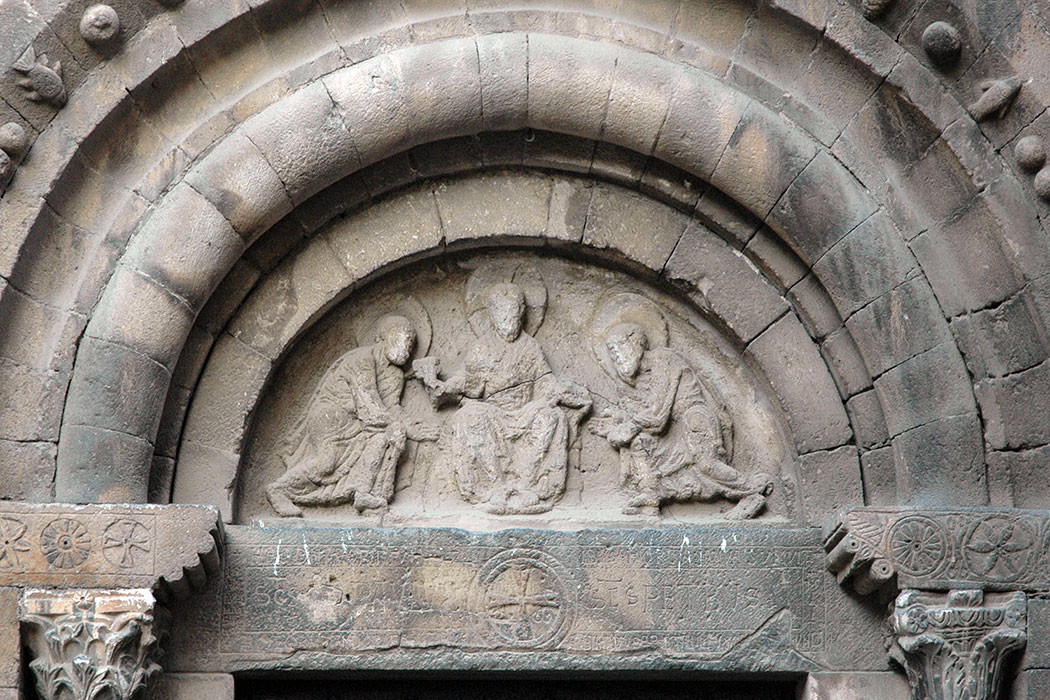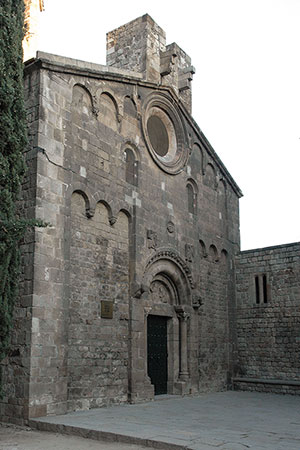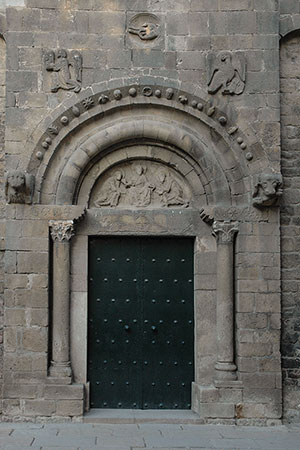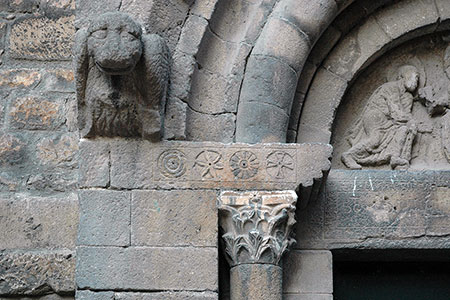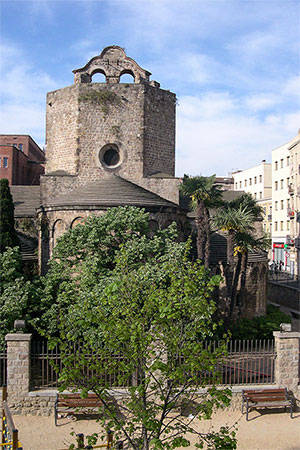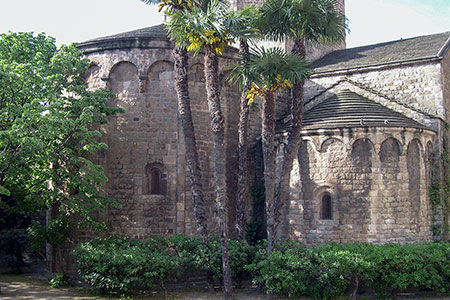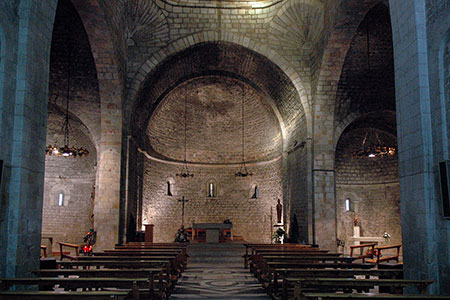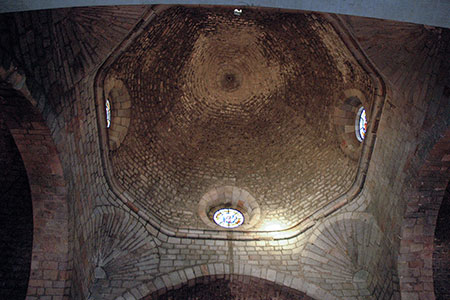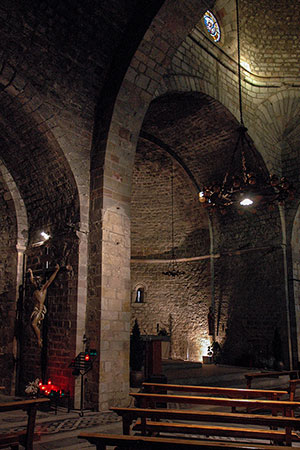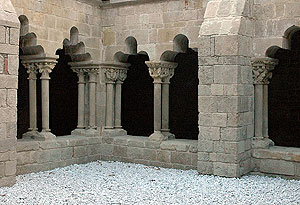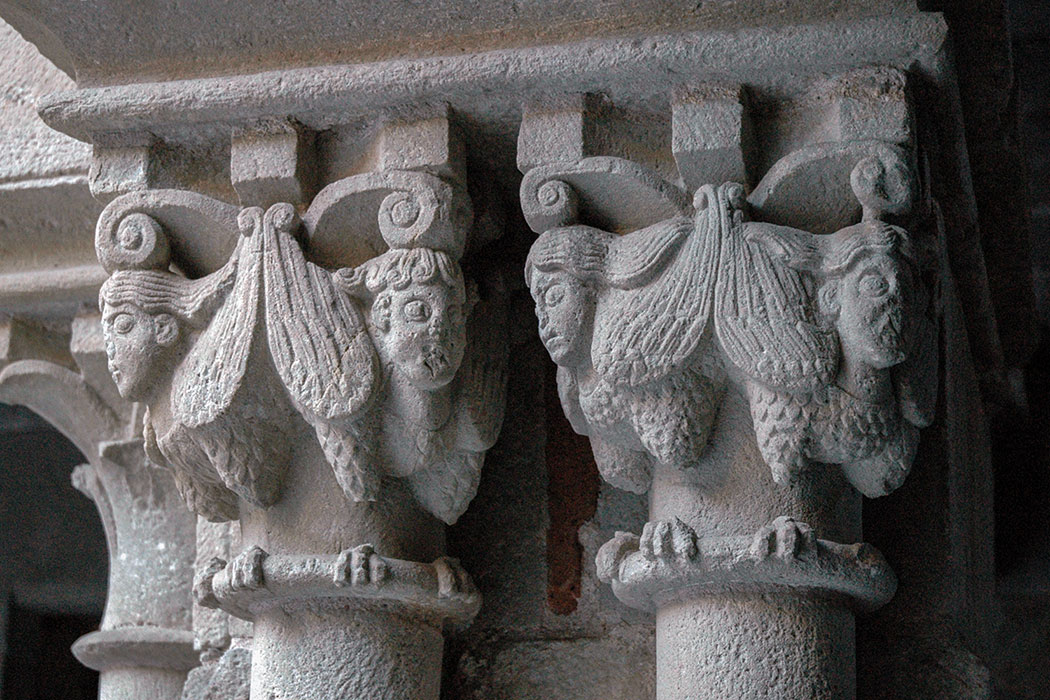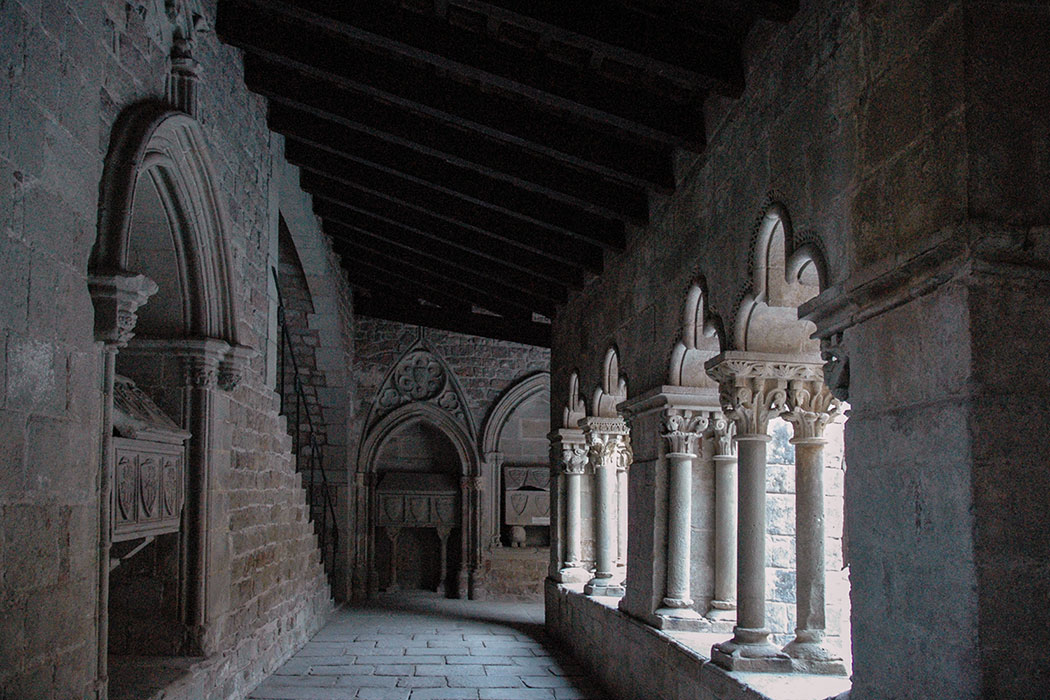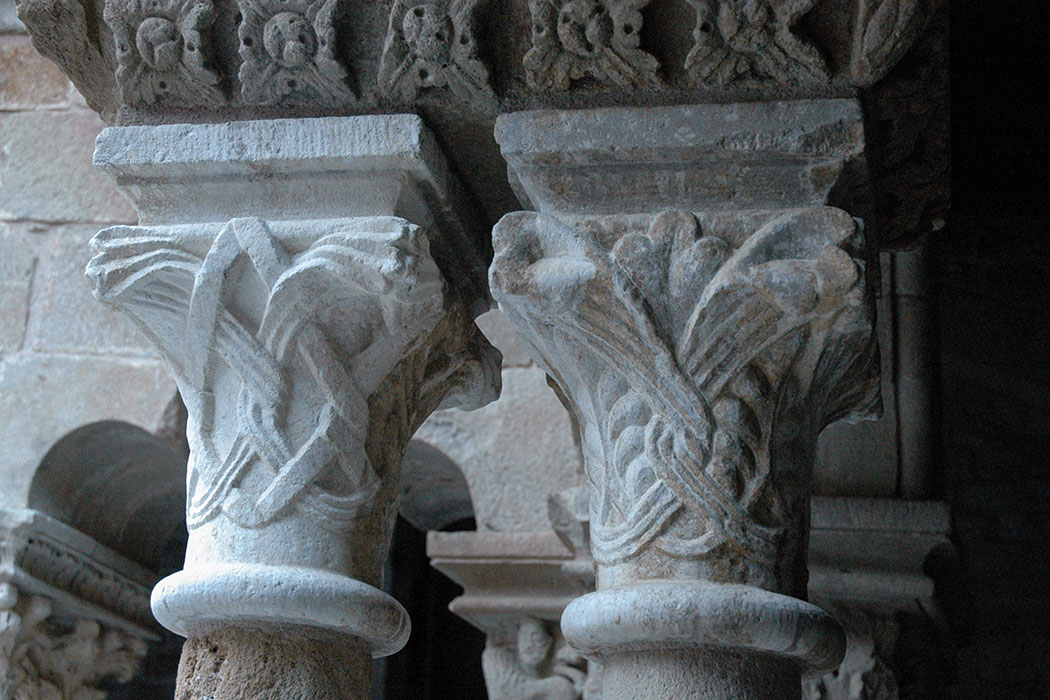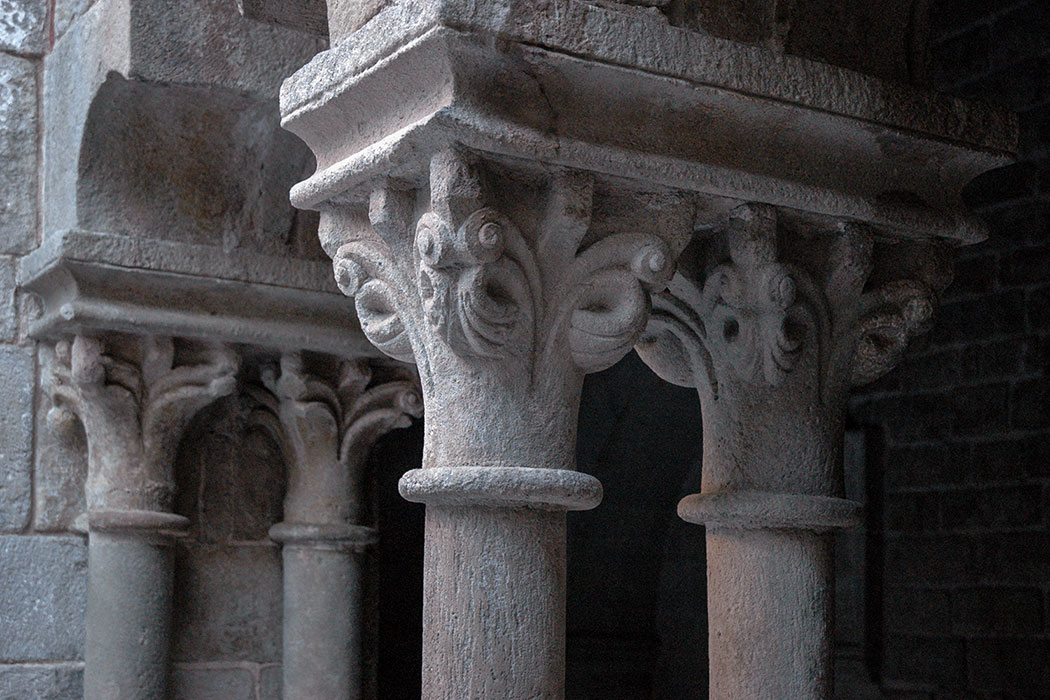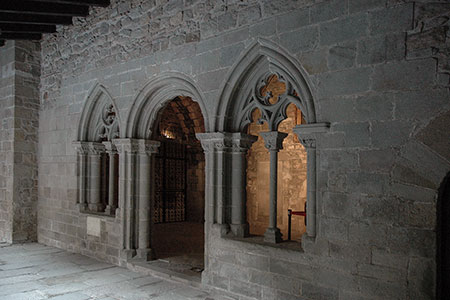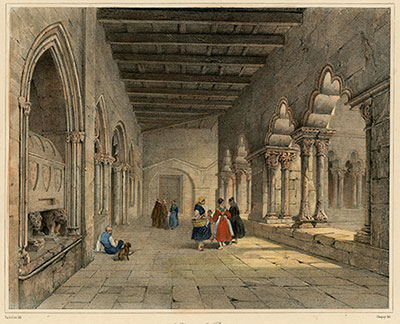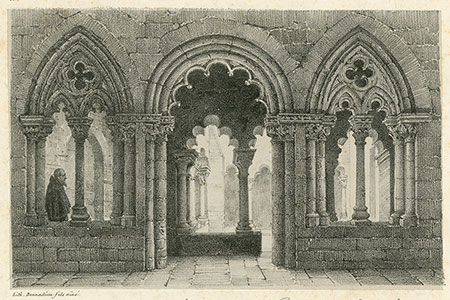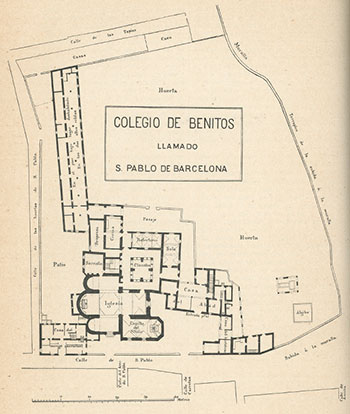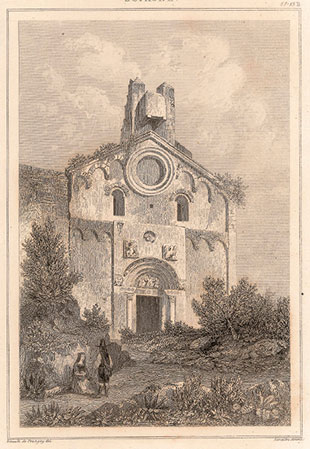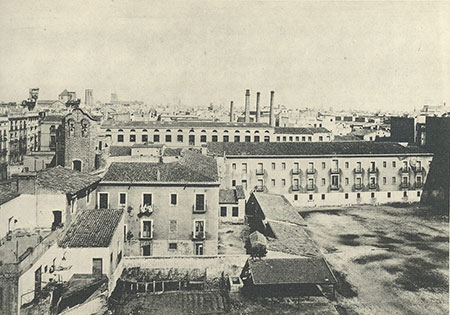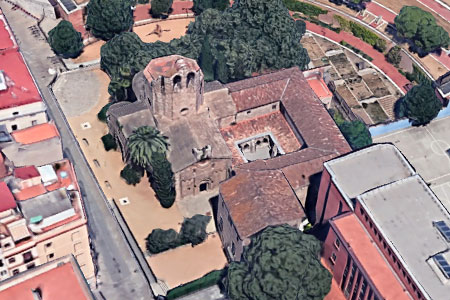Monastery of Sant Pau del Camp
Sancti Pauli de Campo / Sancti Pauli Barchinone / Priory of Sant Pau del Camp
This is a poorly documented monastery if we consider its importance as a monument and also the fact that it is located in a major city like Barcelona. Apart from the foundation attributed to Saint Paulinus of Nola, there are indirect references that suggest its existence in the 10th century but that it was lost when the city was sacked in 985.
On the other hand, architectural remains of constructions from the 6th-7th centuries have also been found, indicating at least the existence of a very ancient place of worship, with roots going back to Roman times. The attack on Barcelona by Almanzor (985) had a profound impact on the city, its inhabitants and its institutions, and the sacking that disrupted the monastery would also have meant the loss of the documentation of the house, especially if we consider the isolation of the place at that time, far from the inhabited centre.
In the 16th century, the tombstone of Count Guifré Borrell, who died in 911, was discovered here. This suggests that in that year there must have been a monastery of sufficient size for the Count of Barcelona to be buried there. This count is also considered to be the founder of the monastery, an event that should be dated to between 897 and 911. It should be noted that there is no other male monastery from this period (Sant Pere de les Puel·les is a female monastery) in the city, which would be strange if this were the case. The community must have been lost afterwards, as this one does not appear in various documents listing monasteries in Barcelona from that period.
It is not until much later that we find what would be a second foundation of the monastery, this took place at the will of Geribert Guitard and his second wife Rotlendis, as confirmed by a papal bull of Urban II. This foundation was made in 1117, placing the new monastery under the tutelage of the Monastery of Sant Cugat, which was to be responsible for promoting it. This information is known thanks to the tombstone of Guillem de Bell-lloc, a descendant of the founders and dated 1307.
The document that reliably proves the existence of the monastery is a bull of Pope Calixtus II (1120) granted to the monastery of Sant Cugat confirming its possession of Sant Pau del Camp and the allodium donated to the latter by Geribert and his wife. Despite this relationship with Sant Cugat, in 1165 a privilege from Pope Alexander III confirmed the possessions and also the privilege of exemption that it enjoyed, and which left it under the tutelage of the Holy See, which would explain why, despite being a priory, it was able to develop its activity autonomously. On the other hand, the house enjoyed special attention and protection from the Crown.
It is likely that the surviving church is the one that was built during the second foundation, i.e. in the first quarter of the 12th century, although it may have earlier and later elements. It must also be said that this was no more than a small monastery, without much vitality, but with some peculiarities, such as the fact that for many years it was the meeting place for the chapters of the Claustral Tarraconense Congregation and its college. In 1577 Pope Gregory XIII united the priory of Sant Pau with the monastery of Montserrat, a dependence that generated conflicts and ended in 1593, recovering its independence until 1617, when it was united with Sant Pere de la Portella and took in its community, from then on it would be considered an abbey.
In the 19th century, it suffered the consequences of the Peninsular War, the Trienio Liberal (Three Liberal Years) and the definitive exclaustration in 1835. The place was used as a school and barracks until 1890, when the state wanted to sell the whole building. A mobilization led to it being declared a national monument in 1879. At the end of the century the deterioration suffered in the previous period began to be restored. Worship was also restored but it still suffered the effects of the Setmana Tràgica (Tragic Week, 1909) and the Spanish Civil War.
The doorway has two columns, one on each side, topped by ancient capitals and imposts (from the 6th or 7th century) between which there is a lintel with an inscription, which is now difficult to read. The tympanum is decorated with a very deteriorated relief of Christ between Saints Peter and Paul. The symbols of the Evangelists complete the ensemble: the lion of Saint Mark and the bull of Saint Luke on either side of the tympanum, and above them the angel of Saint Matthew and the eagle of Saint John. Above, another circular relief with the hand of God.
It should be noted that this is a rather irregular building, with a nave ending in a semicircular apse and a transept with two more apses. The irregularities are difficult to see directly, but the nave loses its alignment with respect to the transept and the apse to the north is also slightly misaligned. The intersection of the nave and transept is covered by a dome with a square base, which is made octagonal by four squinches. It has four circular windows and an octagonal body with a square base on the outside.
The cloister is perhaps the most characteristic element of the monastery. It is located to the south of the church and has a roughly square floor plan. It has a square pillar at each corner and four more pillars between them. Between the pillars are pairs of arches supported by columns and capitals. The characteristic feature of the cloister is the lobed arches, not all of which are the same, as there are three-lobed and five-lobed arches in each gallery. The columns and capitals are not unitary, they have different dimensions and the decoration they present also varies a lot: mostly vegetal and with fantastic animals.
- ADELL, Joan-Albert (2010). Sant Pau del Camp. Les esglésies romàniques de Barcelona. Quaderns del Seminari d’Història de Barcelona, núm. 23. Arxiu Històric de la Ciutat de Barcelona
- ARGAIZ, Gregorio de (1677). La Perla de Cataluña. Historia de Nuestra Señora de Monserrate. Madrid: García de la Iglesia
- BARRAQUER I ROVIRALTA, Gaietà (1906). Las casas de religiosos en Cataluña durante el primer tercio del siglo XIX. Tomo I. Barcelona: F. J. Altés
- BAUCELLS I REIG, Josep (1972). Els monestirs del bisbat de Barcelona durant el pontificat de Ponç de Gualba (1303-1334). II Col·loqui d'Història del Monaquisme Català. Vol. I. Abadia de Poblet
- CAMPS, Jordi; LORÉS, Imma (1994). El claustre de Sant Pau del Camp en el context de l'escultura barcelonina del segle XIII. Lambard, vol. VI. Barcelona: Institut d’Estudis Catalans
- CAPMANY, Aurelio (1931). La iglesia de San Pablo del Campo de Barcelona. Barcelona: Francisco Puig
- COSTA, Xavier (2019). Paisatges monàstics. El monacat alt-medieval als comtats catalans (segles IX-X). Tesi doctoral. Universitat de Barcelona
- DALMASES I PONS, David (1992). Bibliografia sobre Sant Pau del Camp de Barcelona, aproximació a la seva fundació. Lambard: Estudis d'art medieval, núm. 5
- DURAN I SANPERE, Agustí (1973). Sant Pau del Camp. Barcelona i la seva història. La formació d'una gran ciutat. Barcelona: Curial
- FREEDMAN, Paul (1993). A privilege of pope Alexander III for Sant Pau del Camp (Barcelona). Archivum Historiae Pontificiae, vol. 31
- GAVÍN, Josep M. (1993). Inventari d'esglésies. Vol. 26. Barcelonès II (Barcelona Capital I). Barcelona: Arxiu Gavín
- MUTGÉ I VIVES, Josefina (1993). Noticies històriques sobre el monestir de Sant Pau del Camp de Barcelona (1117-1212). Anales de la Universidad de Alicante. Historia Medieval, núm. 9
- MUTGÉ I VIVES, Josefina (2002). Pergamins del monestir benedictí de Sant Pau del Camp de Barcelona. Barcelona: Consell Superior d’Investigacions Científiques
- MUTGÉ I VIVES, Josefina (2008). El monestir benedictí de Sant Pau del Camp de Barcelona a través de la documentació de cancelleria reial de l’Arxiu de la Corona d’Aragó (1287-1510). Barcelona: Fundació Noguera
- PI Y ARIMON, Andrés Avelino (1854). Barcelona antigua y moderna. Tomo 1. Barcelona: T. Gorchs
- PLADEVALL I FONT, Antoni (1992). Catalunya romànica. Vol. XX. Barcelonès, Baix Llobregat, Maresme. Barcelona: Enciclopèdia Catalana
- PUIG I CADAFALCH, Josep, i altres (1911). L'arquitectura romànica a Catalunya. Vol. II. Barcelona: I. E. Catalans
- SANTIAGO FERNÁNDEZ, Javier de (2016). Oraciones por la salvación del alma. El obituario en piedra del monasterio de Sant Pau del Camp en Barcelona. Barcelona: Anuario de Estudios Medievales, núm. 46/2
- VIGUÉ, Jordi; PLADEVALL, Antoni (1974). El monestir romànic de Sant Pau del Camp. Barcelona: Artestudi Ed.
- VILLANUEVA, Jaime (1851). Viage literario a las iglesias de España. Vol. XVIII. Viage a Barcelona. Madrid: Imprenta de la Real Academia de la Historia
